
views
Solving Common Breeding Issues
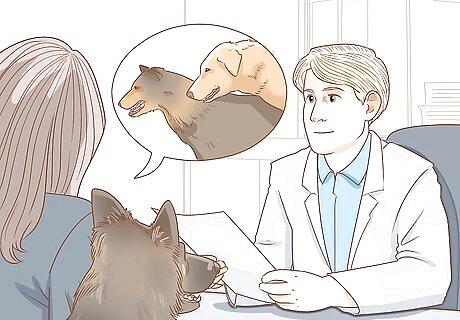
Make sure your dog gets a pre-breeding health check. Before you decide to breed your dog, you should make sure that they are healthy enough to do so. Make an appointment with your vet. Explain that you are planning on breeding your dog, and ask the vet to examine your dog to ensure they are healthy enough for breeding. Dogs can also contract sexually transmitted diseases (STDs), so you need to make sure your dog is tested before you breed it. Canine STDs can infect both dogs and cause breeding complications. Try saying, "Dr. Johnson, I am interested in breeding Fluffy. Can you examine her to make sure that she's healthy enough to have a litter?"
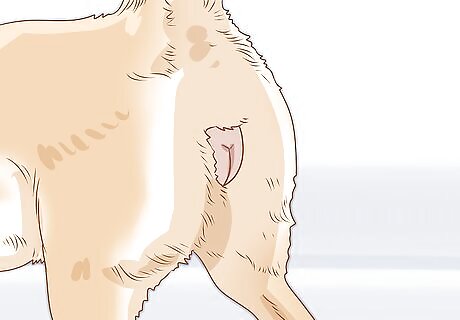
Know when your female dog is in heat. Not knowing when your dog is capable of mating is a common problem. When your female dog is in heat, her eggs mature, making her fertile and capable of producing puppies. If your female dog is not in heat, she cannot mate. In order to address this problem, you should be aware of your female dog’s heat cycle. You should look for: Swelling of the vulva Tendency to mount objects or other dogs Vaginal discharge ranging from pink to red

Avoid breeding your female dog at first heat. While it might be tempting to allow your female dog to mate during her first heat, you should avoid it entirely. While a female dog will go into her heat when it is between 6 and 12 months old, the dog is still maturing and should not mate. You should wait to breed your female dog until it is at least 2 years old.
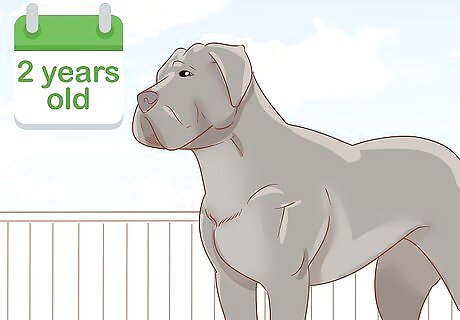
Make sure your male dog is ready to mate. While a male puppy might engage in mounting behavior as early as 3-4 weeks of age, a male dog will not produce sperm until much later. You should wait until your male dog is at least 2 years old before you allow it to mate.
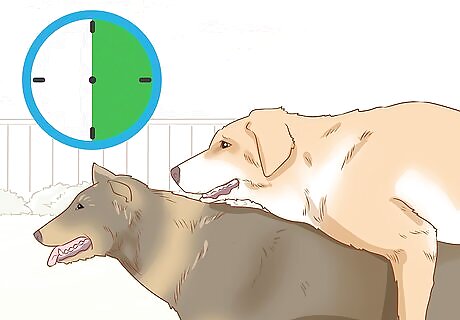
Understand dog intercourse. The breeding tie is the intercourse between a male and a female dog. The male’s penis will enter the female’s vagina. The penis glands will then swell inside the female’s vagina, creating a tie. It's important that the two dogs not be separated during this time. The tie will last for 10-30 minutes, and during this time the majority of the male’s sperm will be deposited in the female’s vagina. If this is the female dog's first time breeding, then it's a good idea to hold the dog in place. Otherwise, it may move out of nervousness, potentially breaking the tie. If you have specific questions about dog intercourse, ask your veterinarian when you take your dog in for its next checkup.

Prevent injuries during the breeding tie. After the male’s penis enters the female’s vagina and creates a breeding tie, it is important that you actively work toward preventing injuries to one or both dogs. You should stay near the dogs during the tie. Work to keep both animals calm, and do not let the female squirm free from the tie as this can injure the animals. Make sure the male dog’s penis has retracted after the tie, as an injured dog will have difficulty breeding in the future.
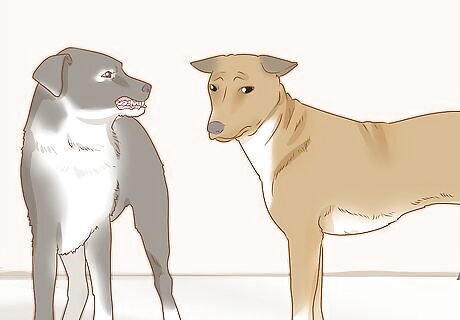
Understand some dogs will reject each other. A common mating problem is when a dog refuses to mate with another dog. For example, a female dog might refuse a male dog because he is her housemate. Submissive males, on the other hand, might refuse to mate with dominant females. If your dog refuses to mate with a particular dog, try using another mate.
Handling Specific Problems
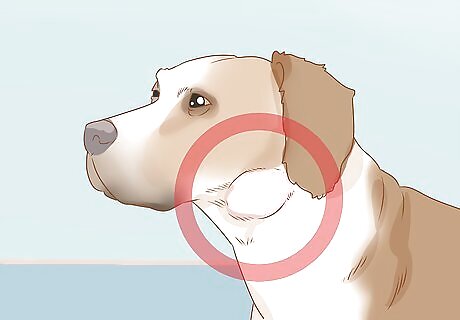
Test your dog for brucellosis. If you are having trouble mating your dog, it is possible your dog could be suffering from brucellosis. Brucellosis is an infectious bacterial disease that affects dogs. It can cause spontaneous abortion in pregnant dogs, and it can cause sterility in both male and female dogs. Symptoms include lethargy, swollen lymph nodes, difficulty walking, vaginal discharge, and swollen testicles.
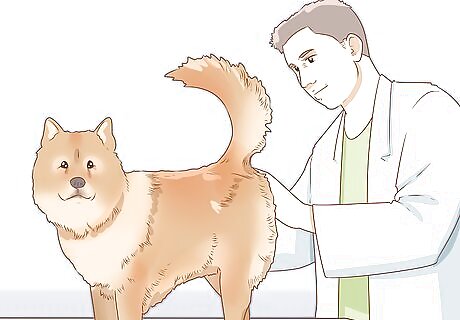
Have your male dog tested for prostate problems. It is not uncommon for male dogs to suffer from prostate problems. These issues are one of the major contributing causes of infertility in male dogs. Ask your vet to examine your dog for prostate problems that might affect its ejaculate volume and sperm mobility. Symptoms include difficulty urinating, lethargy, difficulty walking, and bloody discharge from the penis.
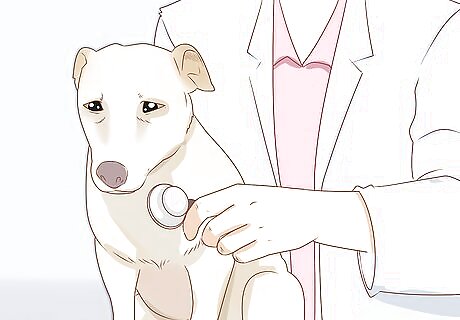
Get your female dog tested for hormonal disturbances. Female dogs often do not produce puppies because of hormonal imbalances and the medical issues associated with such imbalances. Examples include persistent estrus, split heat, and hypothyroidism. Ask your vet to conduct tests to determine if your female dog is suffering from a medical condition resulting from hormonal disturbance.
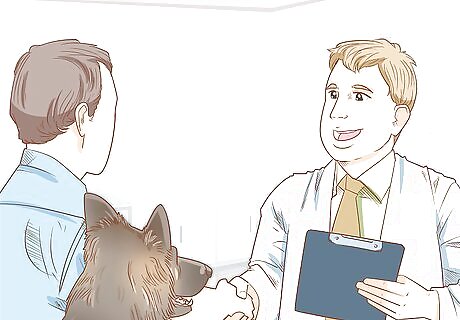
Consider a reproductive specialist. While some mating problems in dogs, such as poor timing, are easily remedied, others require extensive testing or treatment. If your dog is having reproductive issues that cannot be easily solved by you or your vet, consider taking your dog to a reproductive specialist. Veterinary teaching hospitals, for example, often have such specialists.
Practicing Responsible Breeding
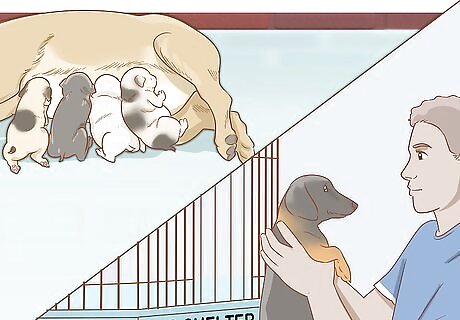
Consider the ethics of breeding dogs. Before you decide to allow your dog to mate, you should seriously consider the ethical implications. It is important to understand that there is an overpopulation of dogs, and that every day dogs are euthanized. Instead of producing puppies, consider adopting a shelter dog.
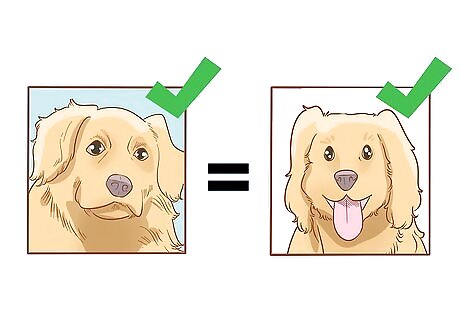
Breed for improvement. If you breed your dog, you should embrace the philosophy of “breed to improve.” This means that you should examine your dog carefully and note its flaws. Then, you should choose a mater that can either balance or entirely eliminate those flaws in offspring. For example, if your dog suffers from arthritis, you should breed her with a dog that does not have arthritis. If your dog suffers from a breed-specific health problem, such as hip dysplasia, try breeding him with a mate who does not suffer from the same ailment.

Work to encourage genetic diversity. If you choose to breed your dog, you should make an effort to cooperate with other breeders in geographic regions other than your own. This will help facilitate the movement of genes within a breed between locales. This is especially important if you are dealing with a breed whose population is small. For example, you should not breed your dog with a dog that lives in your town. If possible try to make connections with a breeder in another part of your state or country. Make sure you ask for the genealogical history of any dog you choose to mate with your dog. This can ensure that you are not breeding your dog with a distant (or close!) relative.

















Comments
0 comment